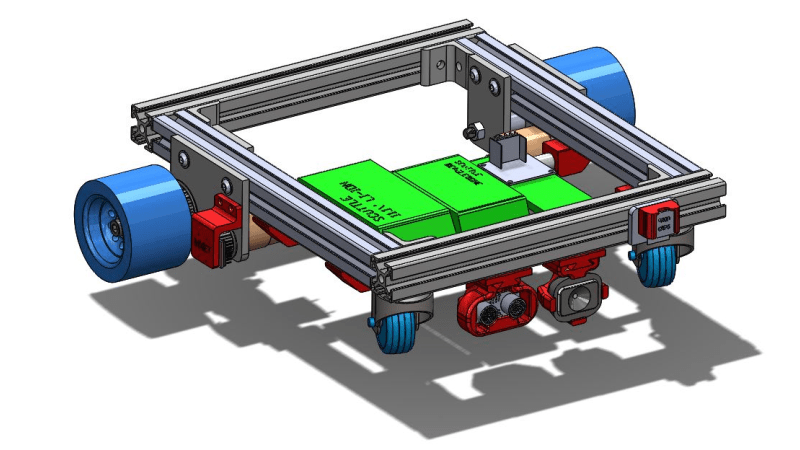If that sounds like a mouthful, just call it SCUTTLE – the open-source mobile robot designed at Texas A&M University. SCUTTLE is a low cost (under $350) robot designed for teaching Aggies at the Multidisciplinary Engineering Technology (MXET) program, where it is used for in-lab lessons and semester projects for the MXET 300 – Mobile Robotics undergraduate course. Since it is designed for academic purposes, the robot is very well documented, making it easy to replicate when you follow the instructions. In fact, the team is looking for others to build SCUTTLE’s and give them feedback in order to improve its design.
Available on the SCUTTLE website are a large collection of videos to walk you through fabrication, electronics setup, robot assembly, programming, and robot operation. They are designed to help students build and operate the mobile robot within one semester. Most of the mechanical and electronics parts needed for the robot are off-the-shelf and easy to procure and the rest of the custom parts can be easily 3D printed. Its modular design allows you the freedom to try different options, features and upgrades. SCUTTLE is powerful enough to carry a payload up to 9 kg (20 pounds) allowing additional hardware to be added. To keep cost low and construction easy, the robot uses a simple, two wheel drive system, using a pair of geared motors. This forces the robot to literally scuttle in a “non-holonomic” fashion to move from origin to destination in a sequence of left / right turns and forward moves, so motion planning is interestingly tricky.
The SCUTTLE robot is programmed using Python3 running under Linux and has been tested working on either a BeagleBone Blue or a Raspberry Pi. The SCUTTLE software guide is a good place to get acquainted with the system architecture.
The standard configuration uses ultrasonic sensors for collision avoidance, a standard USB camera for vision, and encoders coupled to the wheel drive pulleys for determining position with respect to the starting origin. An optional USB LiDAR can be added for area mapping. The additional payload capability allows adding on extra sensors, actuators or battery packs.
To complement information on the website, additional resources are posted on GitHub, GrabCAD and YouTube. Building a SCUTTLE robot ought to be a great group project at maker spaces wanting to get hackers started with Robotics. We have covered many Educational Robot projects in the past, but the SCUTTLE really shines with its ability to carry a pretty decent payload at a low cost.















Nothing new under Sun, since millions of electric, motorized wheelchairs exactly feature 2 motors rear axis drive
just watch via Bing search engine
—-www.bing.com/images/search?q=electric+wheelchair&form=HDRSC2&first=1&cw=1129&ch=622
Rear axis rolls should be replaced by tire wheels for ease of turns.
Could you give web link to individual images of front wheels ?
How to contact Anool Mahidharia about his SCUTTLE ROBOT Project ?
I worked in computer operations on the B-2 bomber project in the late 1980s.
It was a “paperless” factory that was printing HUNDREDS of THOUSANDS of pages each month. Just part of the main computer rooms printing capability were FOUR roll-fed (1 ton rolls of paper) laser printers whose rolls were each replaced at least weekly if not more frequently. One computer room I worked in printed a 3-foot tall report which the programmer then came by to pick up and flip over to rip off about an inch which contained what he needed. Cheaper to print that daily than pay to have someone reprogram the report to just print that last inch.
Another computer room I worked in contained the factory floor controller for the autonomous flat-beds that would carry parts from work area to work area. I was in that room for 3 years. The OUTSIDE contractors had been there for a year or two before me and for several more after me and they had barely gotten the vehicles to work reliably by the time I left the company after another year and a half.
I laughed when I saw the headline of this article and realized that 30 years later getting a robot to drive around on a flat, clear floor is STILL a big deal.
The AI gods are NOT almost here. What we have to fear is still, and always will be, the EVIL humans behind the curtain.
A computer will NEVER think like a human. They may be PROGRAMMED to do TASKS faster, but they will never THINK.
PS – Jonathan if you find this don’t bother to leave a reply.